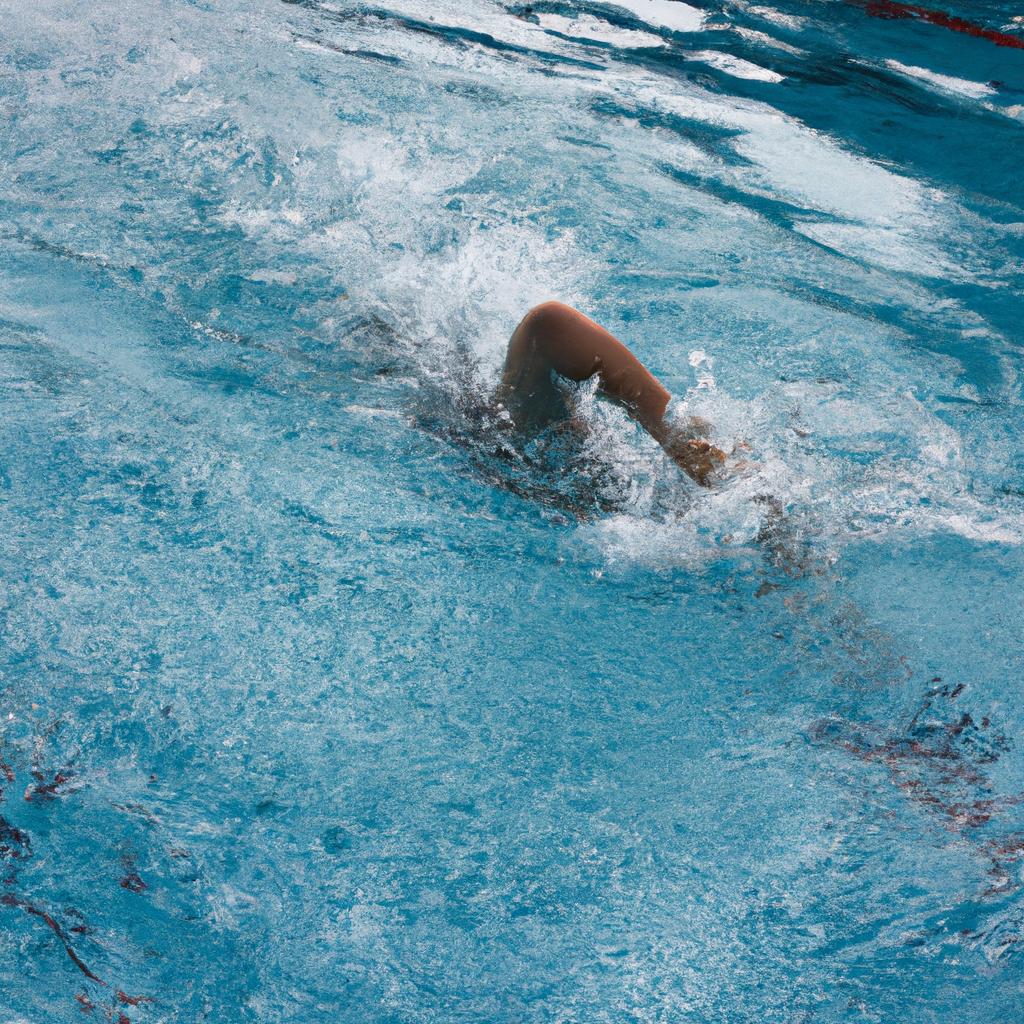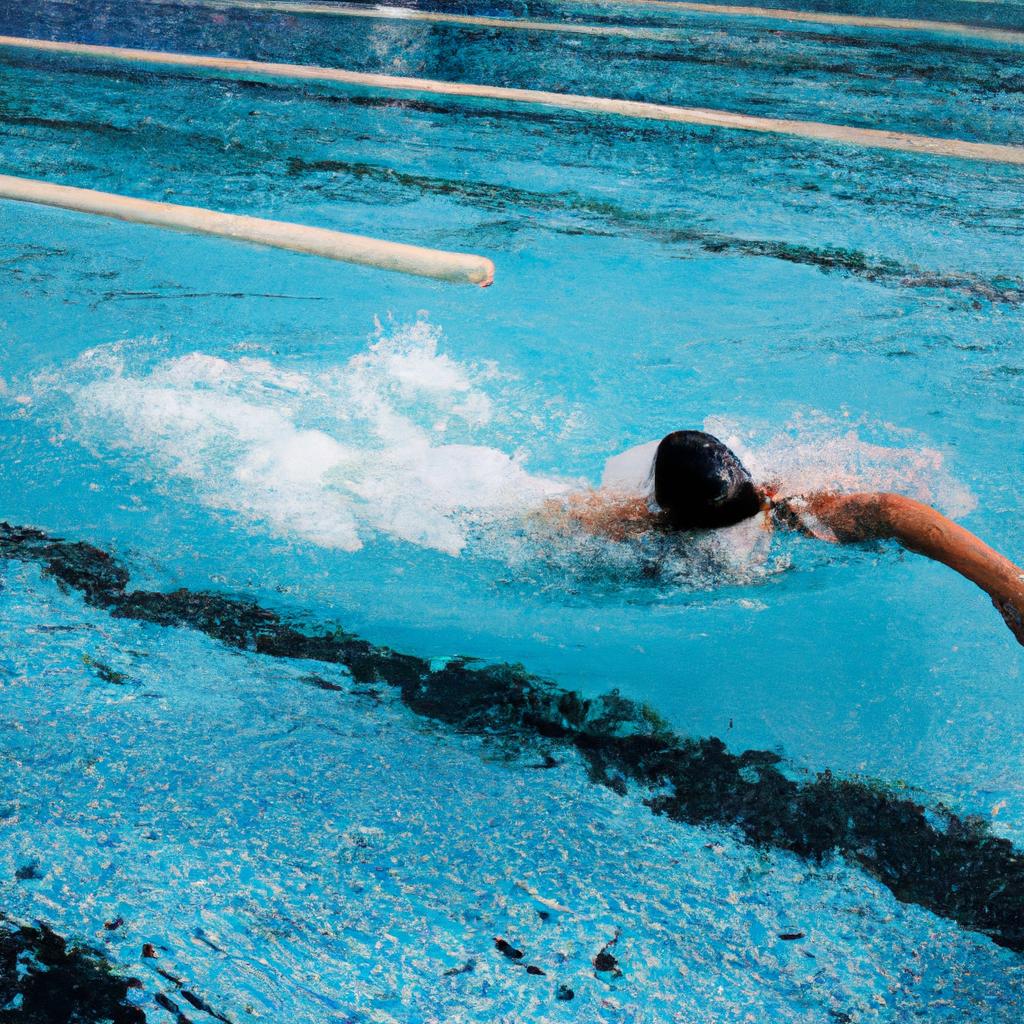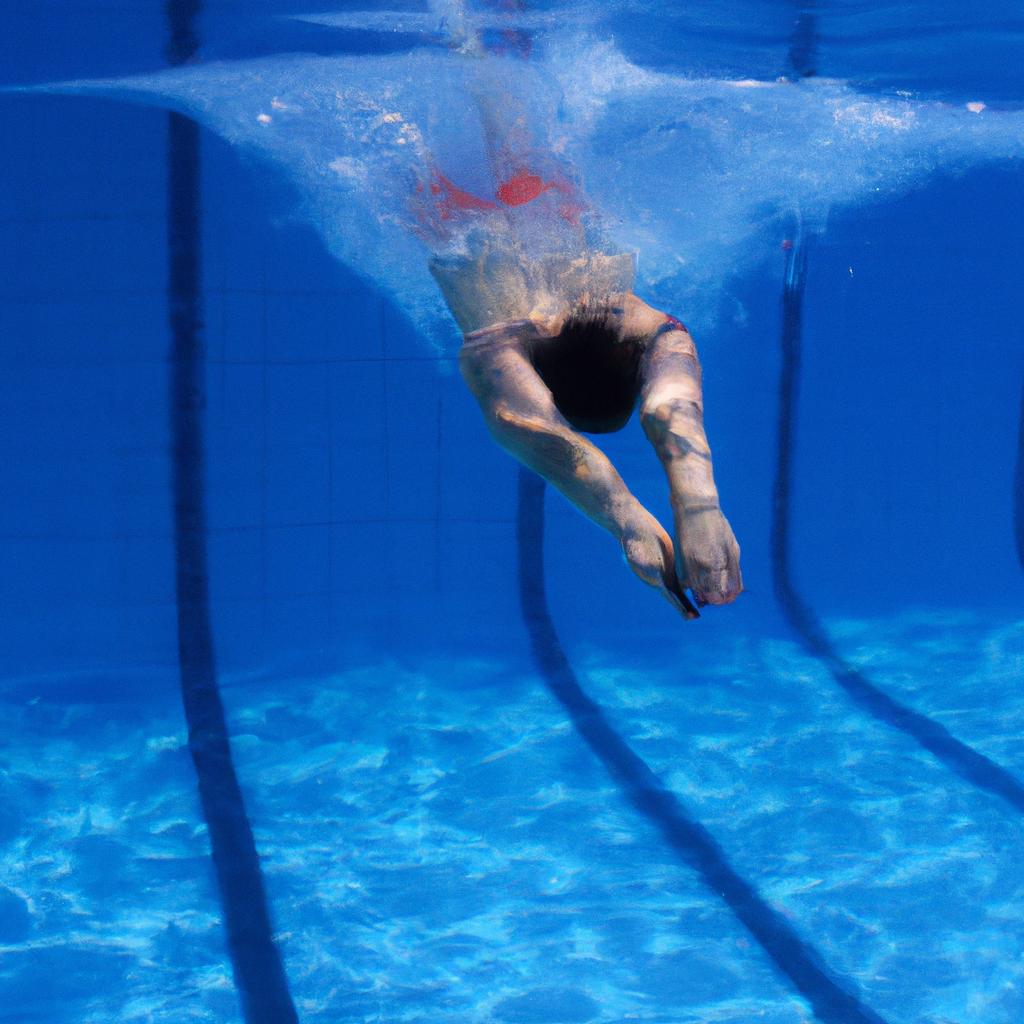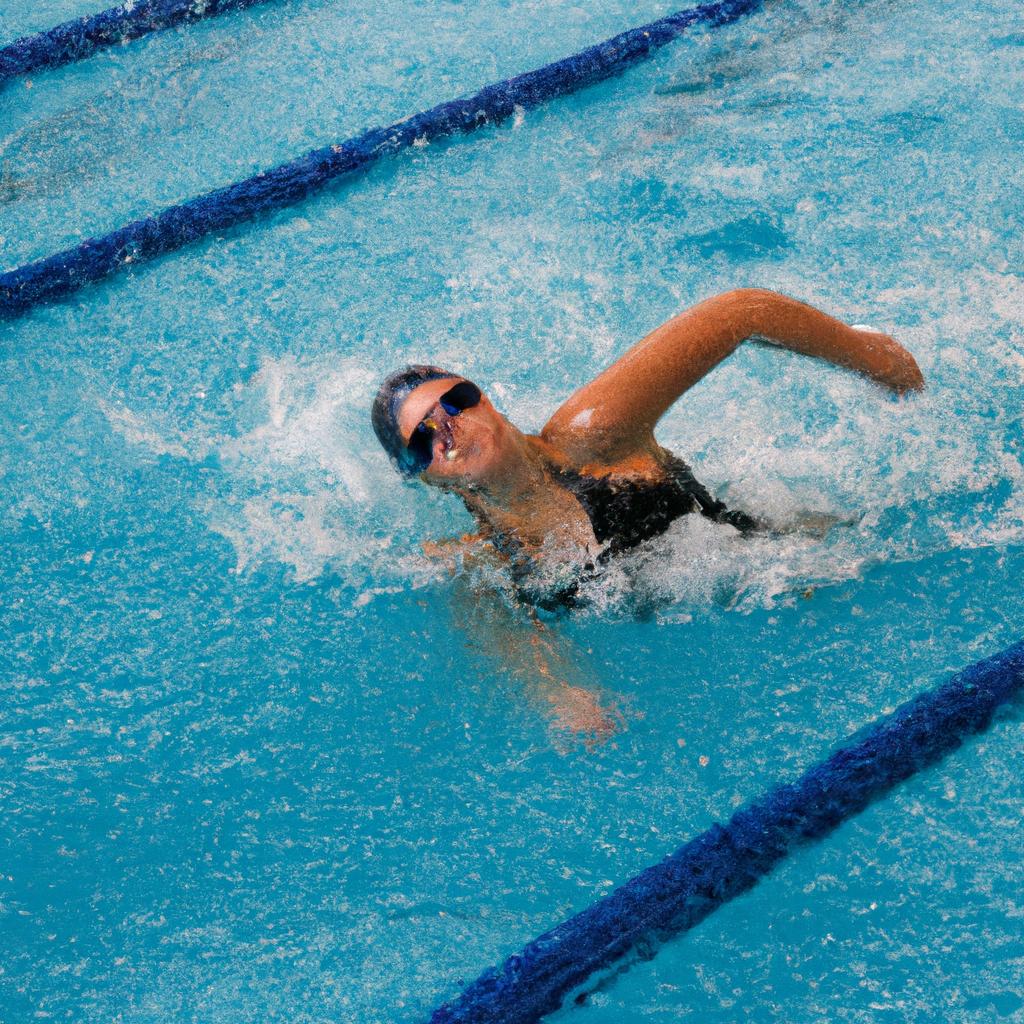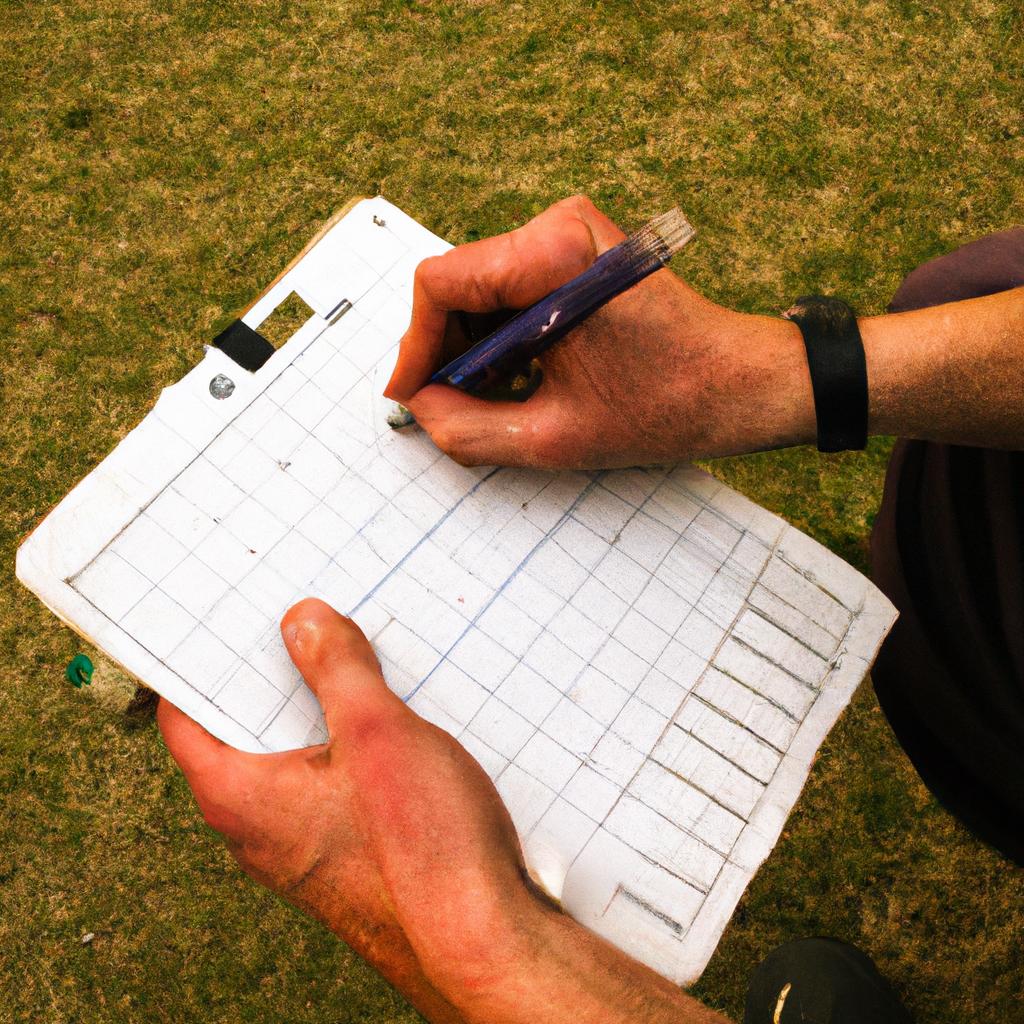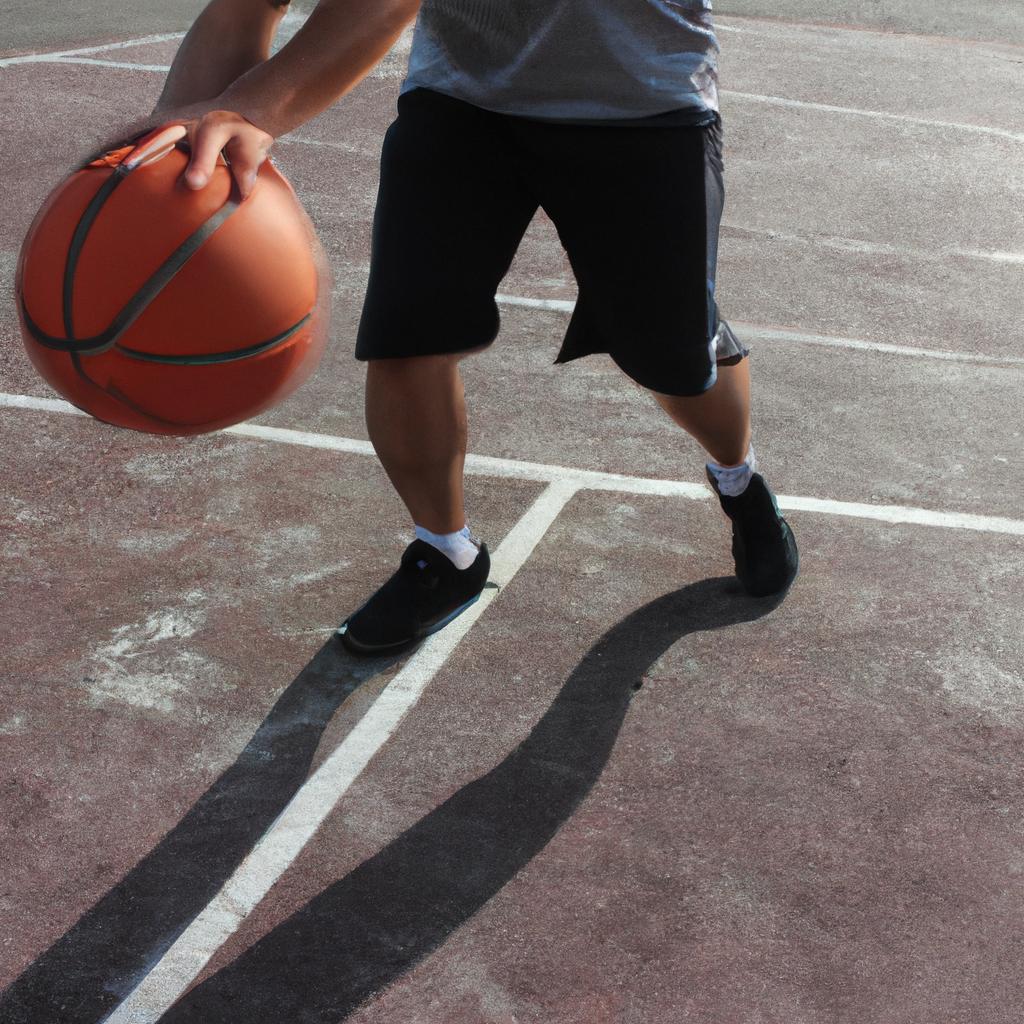Swimming is a popular and versatile sport that encompasses various styles, techniques, and events. Among these swimming disciplines, the medley stands out as an intriguing combination of four different strokes: butterfly, backstroke, breaststroke, and freestyle. This ultimate guide aims to explore the intricacies of medley in games and sports by providing a comprehensive overview of its history, rules, strategies, and training methods.
To illustrate the significance of medley in competitive swimming, let us consider the hypothetical case study of Alex, an aspiring swimmer with exceptional talent but limited experience in multiple strokes. As Alex embarks on their journey to become a skilled medley swimmer, they face numerous challenges such as mastering each stroke’s unique technique while maintaining stamina throughout the race. Additionally, understanding how to strategically transition between strokes becomes crucial for optimizing performance during competitions. By delving into the nuances of medley swimming within this guide, swimmers like Alex can gain valuable insights that will aid them in achieving success both individually and as part of a team.
The first section will delve into the historical origins of medley swimming and trace its evolution through time. Subsequently, we will outline the official regulations governing medley events at different levels of competition. Understanding these rules enables Understanding these rules enables swimmers to participate in medley events with confidence, knowing that they are adhering to the standardized guidelines set by governing bodies such as FINA (Fédération Internationale de Natation) for international competitions.
The next section will explore the unique characteristics and techniques of each stroke involved in medley swimming. From the graceful butterfly stroke to the powerful breaststroke and the versatile freestyle, we will delve into the intricacies of each style, emphasizing the key points of proper form and execution. By providing detailed explanations and visual aids, this guide aims to assist swimmers like Alex in honing their skills in all four strokes, ultimately enhancing their overall performance in medley races.
Transitioning between strokes is a crucial aspect of successful medley swimming. In this guide, we will discuss various strategies and approaches for smooth transitions from one stroke to another. These techniques include maintaining momentum during turns, optimizing underwater dolphin kicks, and maximizing efficiency during stroke changes. By mastering these transition techniques, swimmers can minimize time lost during switches and maintain a competitive edge throughout the race.
To excel in medley swimming, it is essential to establish a comprehensive training regimen that addresses both physical conditioning and technical proficiency. In this guide, we will outline various training methods specific to medley swimming, including drills for individual strokes, endurance workouts tailored to optimize performance in longer distances, and interval training sessions designed to improve speed and stamina. Additionally, we will provide tips on incorporating strength training exercises that target muscle groups essential for each stroke.
Lastly, this guide will touch upon mental preparation and race strategy for medley events. Swimmers like Alex need not only physical prowess but also a strong mindset to overcome challenges encountered during races. We will explore visualization techniques, goal setting strategies, and psychological approaches that can help swimmers stay focused and perform at their best when competing against formidable opponents.
By delving into the history, rules, techniques, training methods, and mental aspects of medley swimming, this comprehensive guide aims to equip swimmers like Alex with the knowledge and tools necessary to excel in this demanding discipline. Whether aspiring to compete at the highest level or simply looking to improve personal performance, understanding the intricacies of medley swimming will undoubtedly contribute to a swimmer’s growth and success in the sport.
Different swimming techniques
Different swimming techniques play a crucial role in enhancing one’s performance and efficiency in the water. Whether it be for competitive purposes or recreational activities, mastering these techniques can greatly impact an individual’s overall swimming experience. This section will explore three key swimming techniques: freestyle, breaststroke, and butterfly.
To illustrate the significance of proper technique, let us consider the case of John, a novice swimmer who struggles with maintaining his speed and endurance during his sessions at the pool. Despite putting in considerable effort, he fails to make progress due to inefficient stroke mechanics. However, after receiving guidance from an experienced instructor on the correct execution of various swimming techniques, including freestyle, breaststroke, and butterfly, John experiences a remarkable improvement in both his speed and stamina.
When it comes to swimming techniques, each style has its unique characteristics that contribute to different aspects of performance. For instance:
- Freestyle is renowned for its fluidity and speed. It involves alternating arm movements accompanied by rhythmic kicking. The streamlined body position allows swimmers to glide effortlessly through the water.
- Breaststroke emphasizes coordination between arm strokes and leg kicks performed simultaneously underwater. This technique enables swimmers to maintain stability while conserving energy.
- Butterfly demands significant upper body strength as well as powerful dolphin-like undulations throughout the entire body. Its distinctive symmetrical arm movement combined with simultaneous leg kicks propels swimmers forward swiftly.
- Increased sense of accomplishment when mastering new skills
- Boosted self-confidence through improved performance
- Enhanced relaxation and stress relief during aquatic activities
- Opportunities for social interaction and camaraderie among fellow swimmers
Moreover, understanding these techniques becomes more accessible with visual aids such as tables. Below is a table highlighting some key features of each technique:
| Technique | Key Features |
|---|---|
| Freestyle | Fluid arm movements and kicking |
| Breaststroke | Simultaneous arm strokes and leg kicks underwater |
| Butterfly | Powerful undulations throughout the body |
In conclusion, mastering different swimming techniques is vital for individuals seeking to enhance their performance in the water. By incorporating proper stroke mechanics into their swimming routine, swimmers can experience notable improvements in speed, endurance, and overall efficiency. Moreover, engaging in these techniques provides not only physical benefits but also emotional satisfaction through a sense of accomplishment, increased self-confidence, relaxation, and opportunities for social interaction. In the subsequent section about the benefits of swimming for overall health, we will explore how these techniques contribute to one’s well-being beyond just athletic performance.
Benefits of swimming for overall health
Having explored the various swimming techniques, let us now delve into the numerous benefits that swimming offers for overall health.
Swimming is not only an enjoyable recreational activity but also a highly beneficial exercise for individuals of all ages and fitness levels. One notable example is Sarah, a middle-aged woman who struggled with joint pain due to arthritis. Upon incorporating regular swimming sessions into her routine, Sarah experienced significant relief from her symptoms, allowing her to move more freely and engage in physical activities she had previously avoided.
Here are some key benefits of swimming for overall health:
-
Low-impact workout: Unlike high-impact exercises such as running or weightlifting, swimming places minimal stress on the joints. This makes it an ideal choice for individuals recovering from injuries or those seeking a form of exercise that reduces strain on their bodies.
-
Full-body workout: Swimming engages multiple muscle groups simultaneously, providing a comprehensive full-body workout. The resistance offered by water enhances muscular strength and endurance while improving cardiovascular fitness.
-
Improved flexibility: The range of motion required during different swim strokes promotes flexibility and increases joint mobility. Regular swimming can help prevent stiffness and improve overall body flexibility over time.
-
Mental well-being: Engaging in regular swimming has been linked to improved mental health outcomes such as reduced anxiety and alleviation of symptoms related to depression. The rhythmic nature of swimming combined with the release of endorphins creates a calming effect on the mind.
- Increased sense of accomplishment when reaching personal goals
- Enhanced self-esteem through mastering new skills
- Opportunity for social interaction at community pools or swim clubs
- Stress relief and relaxation through immersion in water
| Benefit | Description |
|---|---|
| Low-impact workout | Minimizes joint stress; suitable for injury recovery |
| Full-body workout | Engages multiple muscle groups simultaneously; improves cardiovascular fitness |
| Improved flexibility | Promotes joint mobility and range of motion |
| Mental well-being | Reduces anxiety, alleviates symptoms related to depression |
In conclusion, swimming offers a multitude of benefits for overall health. Whether it is the low-impact nature of the exercise, the full-body workout it provides, or its positive impact on mental well-being, swimming proves to be an excellent choice for individuals seeking both physical and emotional wellness.
Moving forward, let’s now explore some common mistakes that beginners should avoid when engaging in swimming.
Common mistakes to avoid in swimming
After exploring the numerous benefits of swimming for overall health, it is crucial to be aware of common mistakes that many swimmers make. These errors can hinder progress and potentially lead to injuries. To illustrate this point, let’s consider a hypothetical situation involving a novice swimmer named Sarah.
First and foremost, one prevalent mistake among beginners like Sarah is neglecting proper breathing techniques. Breathing plays a vital role in swimming as it helps maintain rhythm and endurance. In our example, Sarah often holds her breath underwater for an extended period, causing discomfort and reducing her efficiency in the water. To avoid such issues, swimmers should practice rhythmic inhalation and exhalation while their face is out of the water.
Secondly, poor body positioning is another frequent error observed among swimmers. As we return to Sarah’s case study, she tends to swim with her head positioned too high above the water surface, creating unnecessary drag on her body and slowing down her strokes. It is essential for swimmers to aim for a streamlined position by keeping their heads aligned with their spines and looking straight ahead or slightly downward.
Additionally, inadequate kicking technique often plagues inexperienced swimmers like Sarah. She struggles with erratic leg movements instead of employing strong and controlled kicks from the hips. Developing proper kicking form not only enhances propulsion but also improves stability in the water.
To emphasize these points further, here are some key reminders:
- Focus on maintaining rhythmic breathing patterns.
- Ensure correct body alignment for reduced resistance.
- Practice efficient kicking technique from the hips.
- Seek guidance from trained instructors or coaches for personalized feedback.
In summary, avoiding common mistakes when swimming contributes significantly to improving performance and minimizing potential injuries. By paying attention to aspects such as breathing technique, body positioning, and effective kicking methods, swimmers like Sarah can enhance their skills in the pool.
Transition into subsequent section about “Equipment and gear needed for swimming”:
Now, let’s delve into the essential equipment and gear required to make your swimming experience safe and enjoyable.
Equipment and gear needed for swimming
Transitioning from the previous section on common mistakes in swimming, it is crucial to understand the equipment and gear needed for an optimal swimming experience. By equipping oneself with the right tools, swimmers can enhance their performance and minimize potential risks. Let us explore some fundamental equipment required for swimming.
One essential piece of equipment for swimmers is a well-fitted swimsuit that allows freedom of movement while providing adequate support. Whether it be a one-piece or two-piece suit, selecting the right material and fit can greatly impact comfort and efficiency in the water. For instance, choosing a suit made of chlorine-resistant fabric ensures durability over time.
In addition to swimwear, goggles are indispensable accessories for swimmers. Goggles not only protect the eyes from irritation caused by chlorinated water but also enable clear vision underwater. They come in various styles such as mask-style goggles or traditional ones with separate eye cups that provide a wider field of view.
To further optimize performance, many swimmers utilize additional training aids during practice sessions. These aids include kickboards, pull buoys, fins, and paddles. Kickboards assist in isolating leg movements and improving lower body strength, while pull buoys help focus on arm strokes by keeping legs afloat. Fins augment propulsion and flexibility in the water, whereas paddles increase upper body strength and stroke power.
Swimming Equipment:
- Swimsuit: Choose a well-fitted suit made of durable material.
- Goggles: Select goggles that offer both comfort and clear underwater vision.
- Training Aids: Utilize tools like kickboards, pull buoys, fins, and paddles to improve technique and strengthen specific muscle groups.
By being mindful of these essential items when preparing for swimming activities, individuals can maximize their enjoyment while reaping significant benefits from this engaging sport.
Moving forward into our next topic about safety tips for swimming
Safety tips for swimming
Transitioning from the previous section on equipment and gear needed for swimming, let us now delve into safety tips that are essential for a safe and enjoyable swimming experience. To illustrate the importance of following these guidelines, consider this hypothetical scenario: imagine a novice swimmer who enters the deep end of a pool without proper supervision or knowledge of basic water safety principles. This individual is at an increased risk of drowning due to their lack of understanding regarding buoyancy and proper breathing techniques.
To ensure your safety in the water, it is crucial to adhere to the following precautions:
-
Learn how to swim proficiently: Acquiring strong swimming skills is fundamental before engaging in any aquatic activity. Taking lessons from certified instructors can provide you with the necessary confidence and competence to navigate various water conditions effectively.
-
Supervision matters: Always swim under appropriate supervision, especially if you are not yet a confident swimmer. Whether it be at a public pool or natural body of water, having someone present who can respond quickly in case of an emergency is vital.
-
Be aware of potential hazards: Familiarize yourself with any potential risks associated with the specific swimming location you plan to visit. These could include strong currents, underwater obstacles, or shallow areas where diving might pose a danger.
-
Practice good hygiene habits: Maintaining personal hygiene plays an important role in preventing recreational water illnesses such as skin infections or gastrointestinal issues caused by ingesting contaminated water.
In addition to adhering to these safety measures, it is useful to have access to relevant information about first aid procedures and CPR techniques should an incident occur while swimming.
| First Aid Kit Essentials | ||
|---|---|---|
| Adhesive bandages | Antiseptic solution | Sterile gauze pads |
| Tweezers | Cotton swabs | Scissors |
By keeping these supplies readily available near the swimming area, you can respond promptly to minor injuries and potentially prevent them from escalating.
In the pursuit of a safe and enjoyable swimming experience, it is essential to prioritize your well-being by adhering to these safety precautions. By doing so, you can fully embrace the joys of being in the water without compromising your personal safety or that of others around you.
Transitioning smoothly into our next section about how to improve your swimming skills, let us explore techniques and exercises that will help refine your abilities in the water.
How to improve your swimming skills
Transitioning from the previous section on safety tips, it is essential to not only prioritize safety when swimming but also strive for improvement in our swimming skills. By focusing on enhancing our technique and endurance, we can fully enjoy this invigorating sport while reaping its numerous health benefits.
Imagine a novice swimmer named Sarah who recently took up swimming as a form of exercise. At first, she struggled with basic strokes and felt exhausted after just a few laps. However, through consistent practice and dedication, Sarah gradually improved her skills and witnessed remarkable progress over time. This example exemplifies how anyone can achieve growth in their swimming abilities through perseverance and regular training.
To further enhance your swimming prowess, here are some key strategies you can incorporate into your training regimen:
-
Vary Your Workouts: Engaging in different types of swimming workouts helps challenge both your mind and body. Consider incorporating interval training, where you alternate between high-intensity bursts of speed and periods of active recovery. Additionally, try experimenting with various strokes to target different muscle groups and improve overall coordination.
- Example bullet point list:
- Interval training
- Stroke variation
- Example bullet point list:
-
Seek Professional Guidance: Enlisting the help of a qualified swim coach or instructor can provide invaluable guidance tailored to your specific needs. They can assess your technique, identify areas for improvement, and design personalized workout plans that cater to your goals.
-
Example table:
Benefits of Seeking Professional Guidance 1. Expert advice 2. Customized workout plans 3. Skill assessment 4. Improved performance
-
-
Practice Breathing Techniques: Proper breathing plays a crucial role in maximizing efficiency during swimming. Focus on rhythmic inhalation and exhalation patterns that synchronize with your stroke movements. Incorporating breath control drills into your routine will help increase lung capacity and enhance overall endurance.
Through continuous practice, dedication, and the implementation of these strategies, you can witness significant improvements in your swimming abilities. Remember that progress may be gradual but staying committed to regular training will yield rewarding results. Embrace the journey towards becoming a stronger and more proficient swimmer while relishing the joy this sport brings to your life.

